Paris cafes surely linger in the memory of everyone who visits the city. Oscar Hammerstein II summed it up well when he wrote ‘The last time I saw Paris, her heart was warm and gay. I heard the laughter of her heart in every street café.’ Paris welcomes you to its corner cafes, its bistros and its restaurants. This post explores the history of the Paris café, with its properly attired waiters, its bread baskets and its clusters of little tables, spilling out onto the pavements. Here, you can find out about the ‘must-visit’ establishments and the famous Parisians who made them their own.
paris cafes: a little history

By 1666, coffee had arrived in Paris and was being sold at street booths and becoming very popular. In that year a Sicillian, one Francesco Procopio de Cotillo decided to open an establishment where the new drink could be served indoors, indeed brought to you at a table by waiting staff. That first Parisian café, Le Procope, proved a lasting hit and is still serving customers today in its original building in Rue de l’Ancienne Comédie (6th arrondissement). By the 18th century luminaries like Voltaire and Rousseau were regular customers. Today it serves a traditional brasserie menu in museum-style surroundings, where significant documents from, for example, the Revolution – and even one of Napoleon’s hats – are on display.
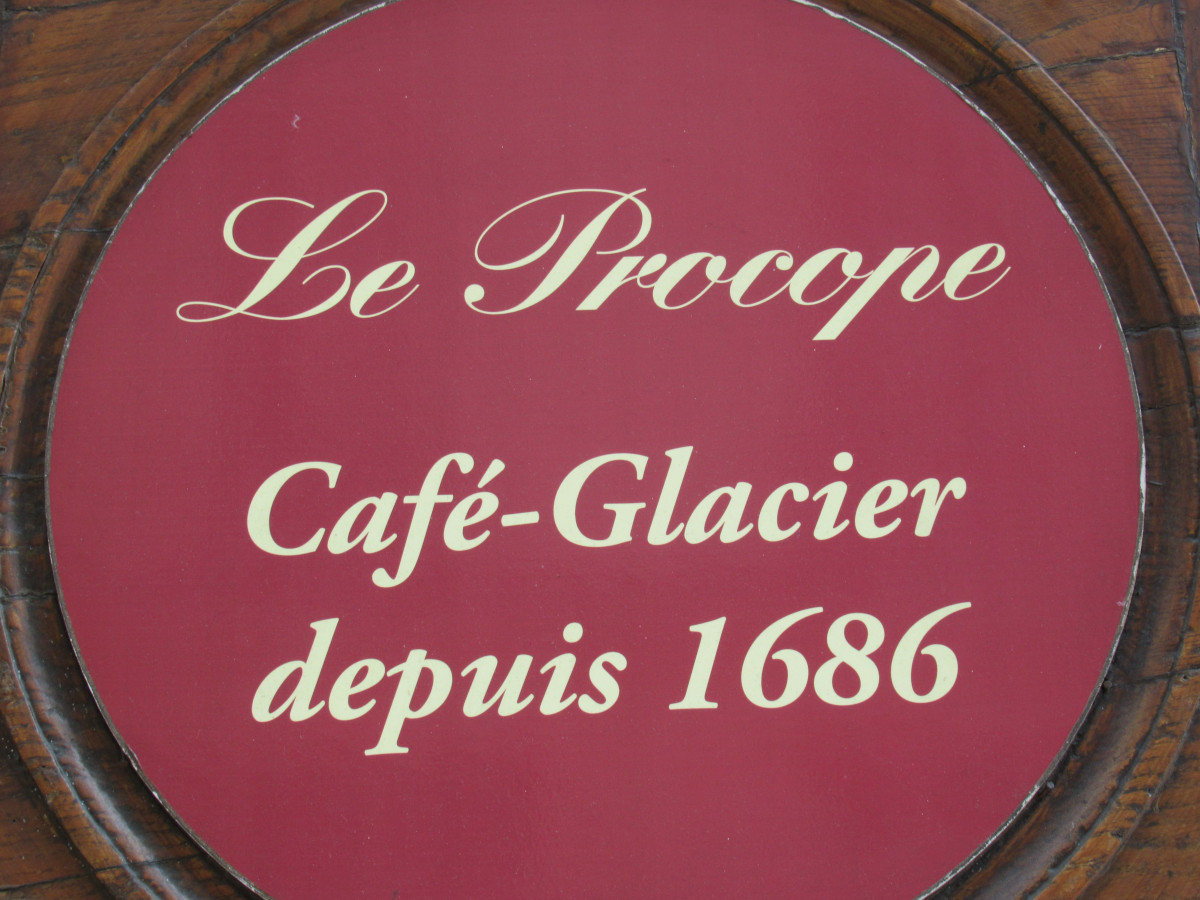
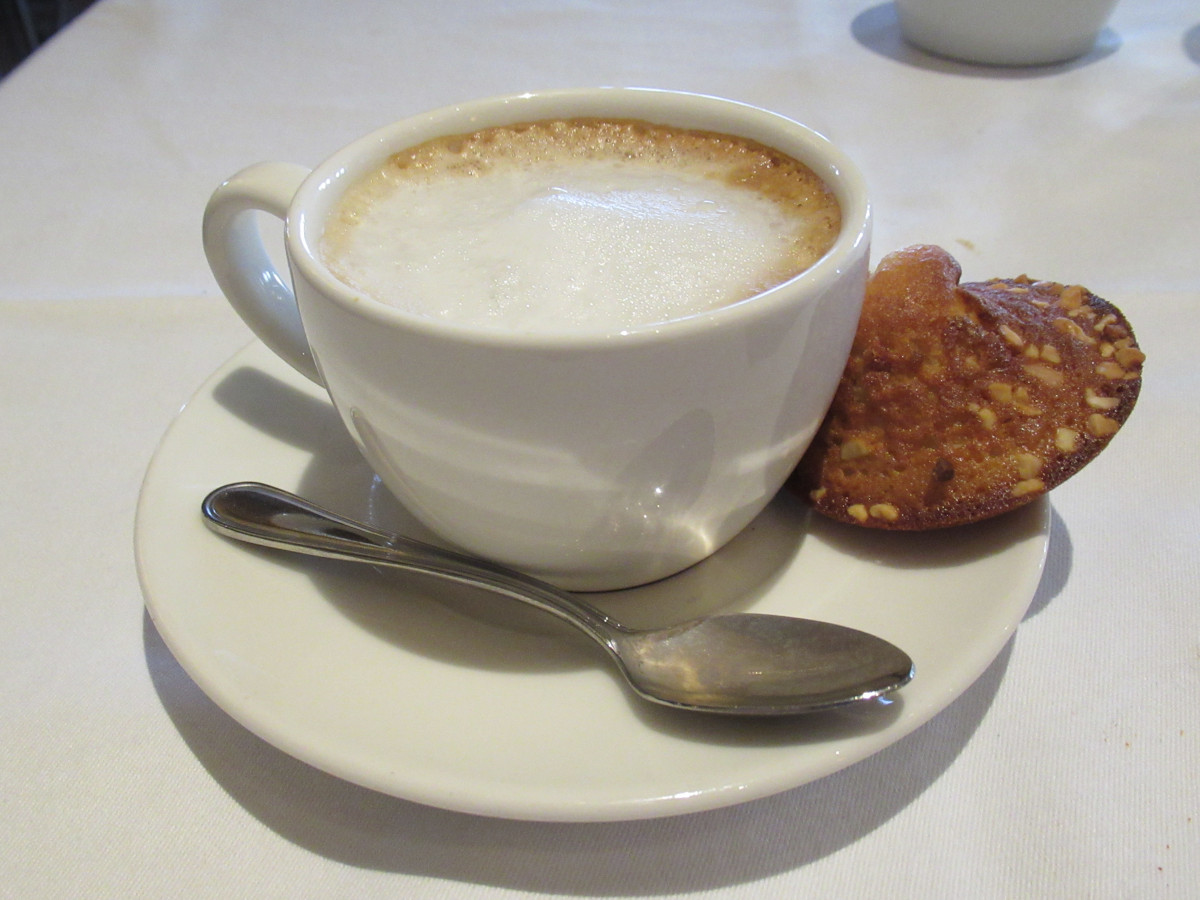
In the late 19th century two significant changes came about. Baron Haussman’s elegant new avenues were transforming Paris and café owners took advantage of the widened pavements in the area around the Opéra to put their tables and chairs outside their cafes. And in Montmartre, the café-cabaret tradition began as owners sought to attract more customers by providing entertainment. Both of these traditions have stuck, but today you will also find a plethora of ‘cafés du coin’, or neighbourhood cafés, smaller establishments used mainly by those who live or work in the area.
paris cafes today
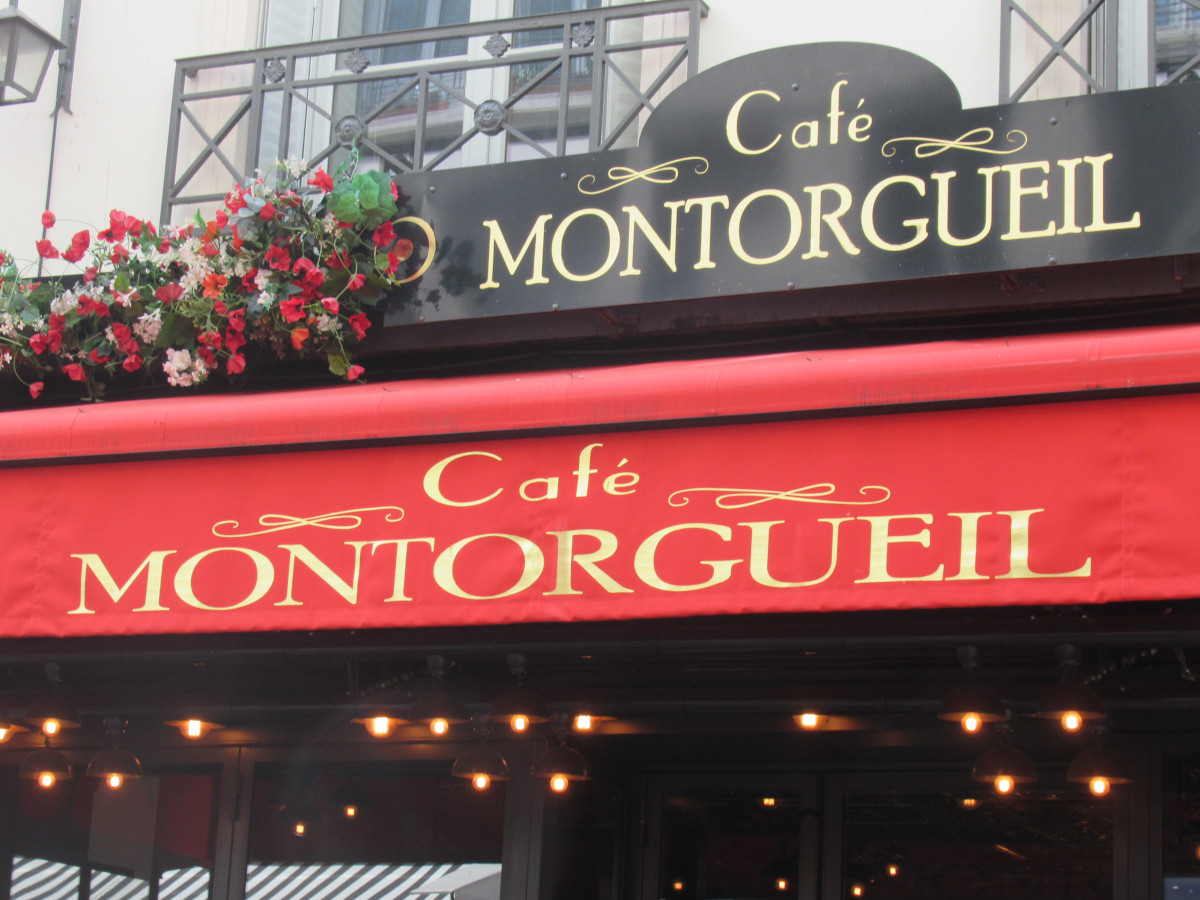

What makes the atmosphere of traditional Paris cafés? Often, it’s a red awning, a set of little tables outside on the pavement and the ever-present waiters, often in black trousers and white shirts. Not gap-year students, but professionals, often with years of experience. Stella Duffy summed it up like this: ‘The linen, the glass, the crockery, the waiters with their insistence on pouring and placing and setting and getting it all right.’ Stephen Clarke wrote about the waiters who ‘sway between tables holding giant trays of food at shoulder level’ and also, in larger establishments, the maître d’, in a shiny suit, who is ‘chic and commanding’ and keeps an eye on every detail.
George Orwell, writing of his experiences working in Parisian cafés in the 1920s, had advice which still holds good today. His boss, he explained, knew that his new restaurant had a chance of success when he saw that the first French customer who came returned the next day with two French friends. His reasoning was that ‘the surest sign of a bad restaurant is to be frequented only by foreigners.’
the cafes of saint-germain

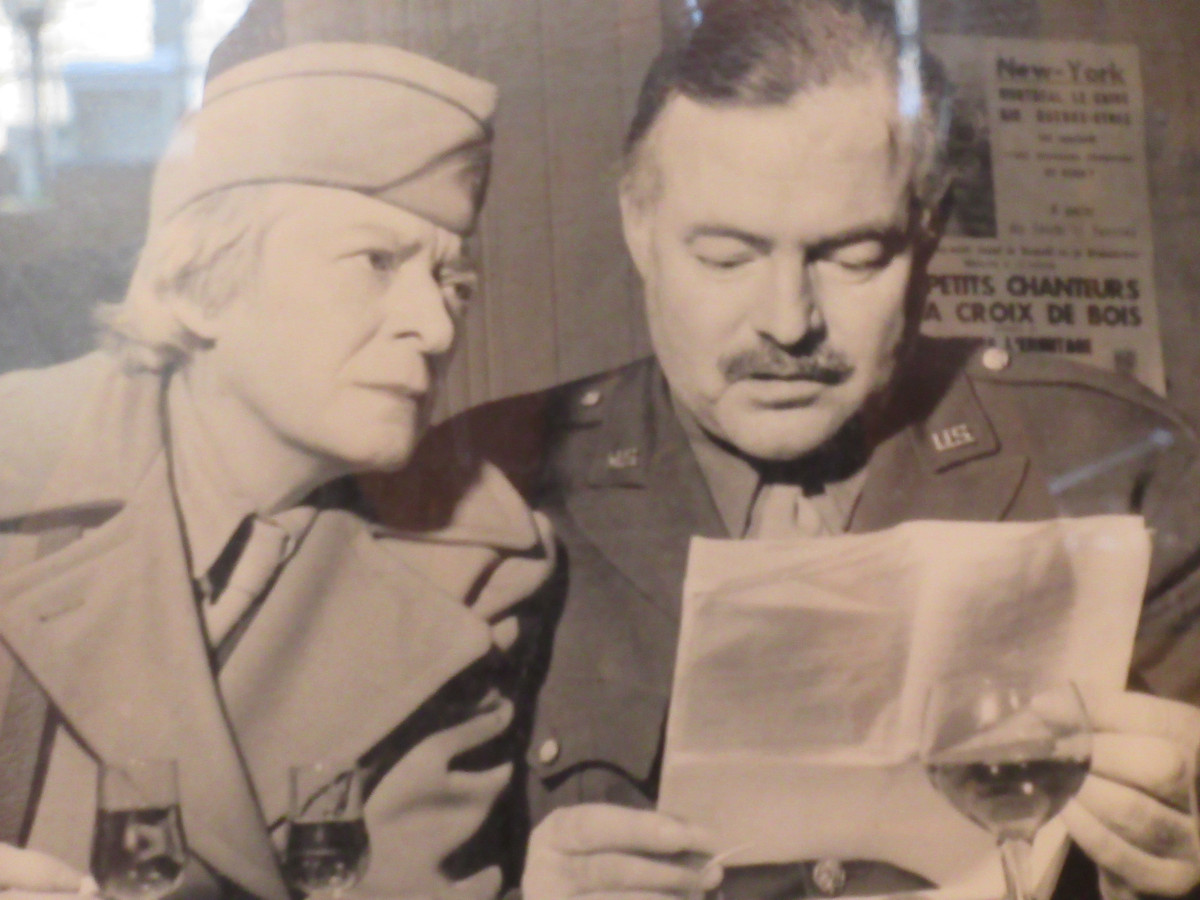
Some of the city’s most iconic cafés are clustered near the Saint-Germain-des-Prés church. Just opposite it is Les Deux Magots, which opened in 1884 and became a literary hub in the 20th century. Famous customers in the 1920s included James Joyce and Ernest Hemingway and during World War II Jean-Paul Sartre and Simone de Beauvoir came regularly to write here. There are black and white framed photos of them and other well-known past customers all around the inside of the café. Next door is the Café de Flore which has a similar history.

Just down the road is the Café Lipp, which has long been popular with politicians, being close to the Assemblée Nationale. It’s said that Président de Gaulle, aware of gossip about quarrels between his Prime Minister and his Finance Minister, instructed them to be seen together somewhere prominent, saying ‘Be seen having dinner together. Go to Lipp.’ Today, it’s another of those upmarket establishments full of mirrors, leather benches, white linen cloths, pristine cutlery and fine glassware.
montparnasse cafes
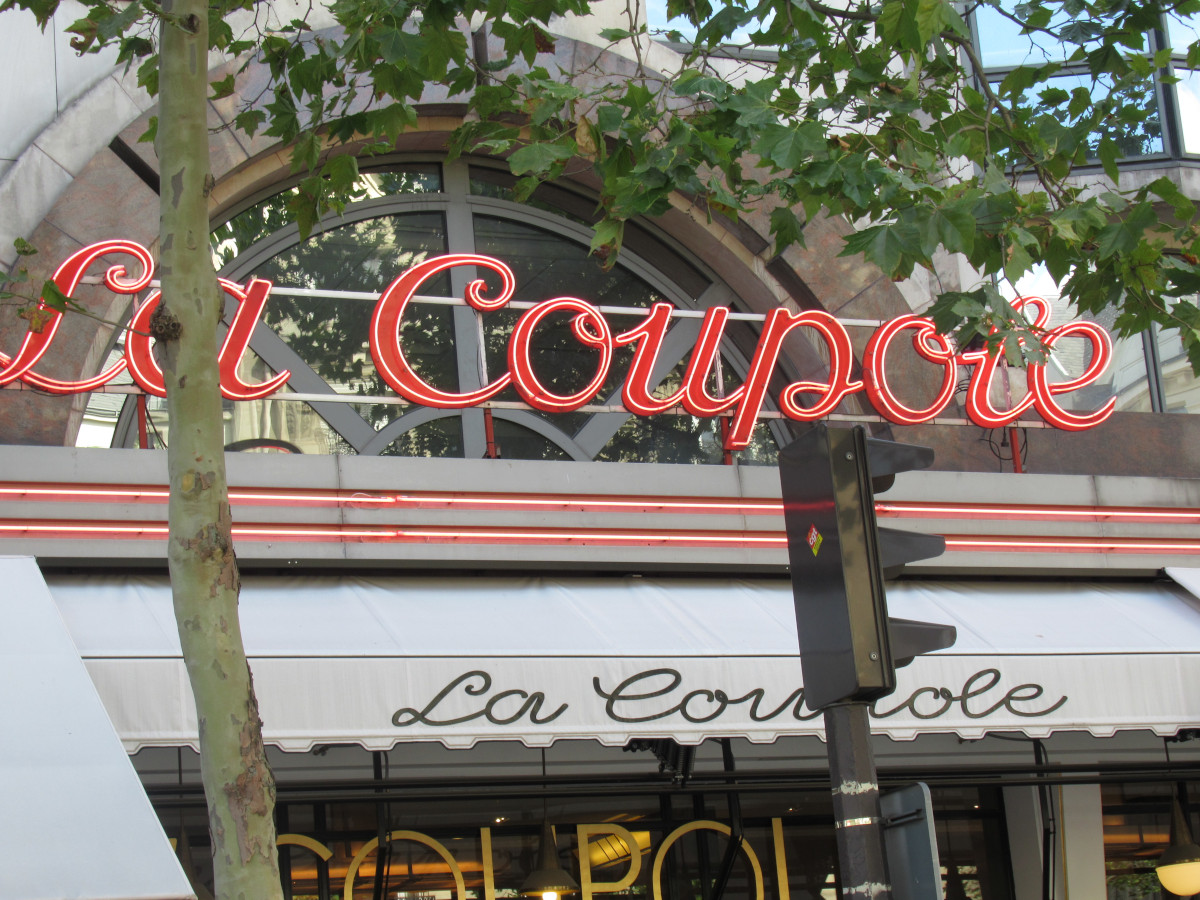

There’s a cluster of well-known cafés around the crossroads where Boulevard Montparnasse meets Boulevard Raspail: Le Dôme, La Coupole, La Rotonde, and Le Select. In the 1920s many writers and artists gathered here: Hemingway, T S Eliot, F Scott Fitzgerald, Picasso and Man Ray. Inside La Coupole you’ll find the original wall paintings which artists did in return for a few drinks and downstairs is the bar and dance floor where jazz-age parties were held. Today all four retain elements of their art deco glamour and serve traditional brasserie food. The author Stephen Clarke’s recommendation is to enjoy ‘a couple of dozen oysters and a bottle of champagne’ and the former may well be served on a silver platter.
2 more cafes with a back story

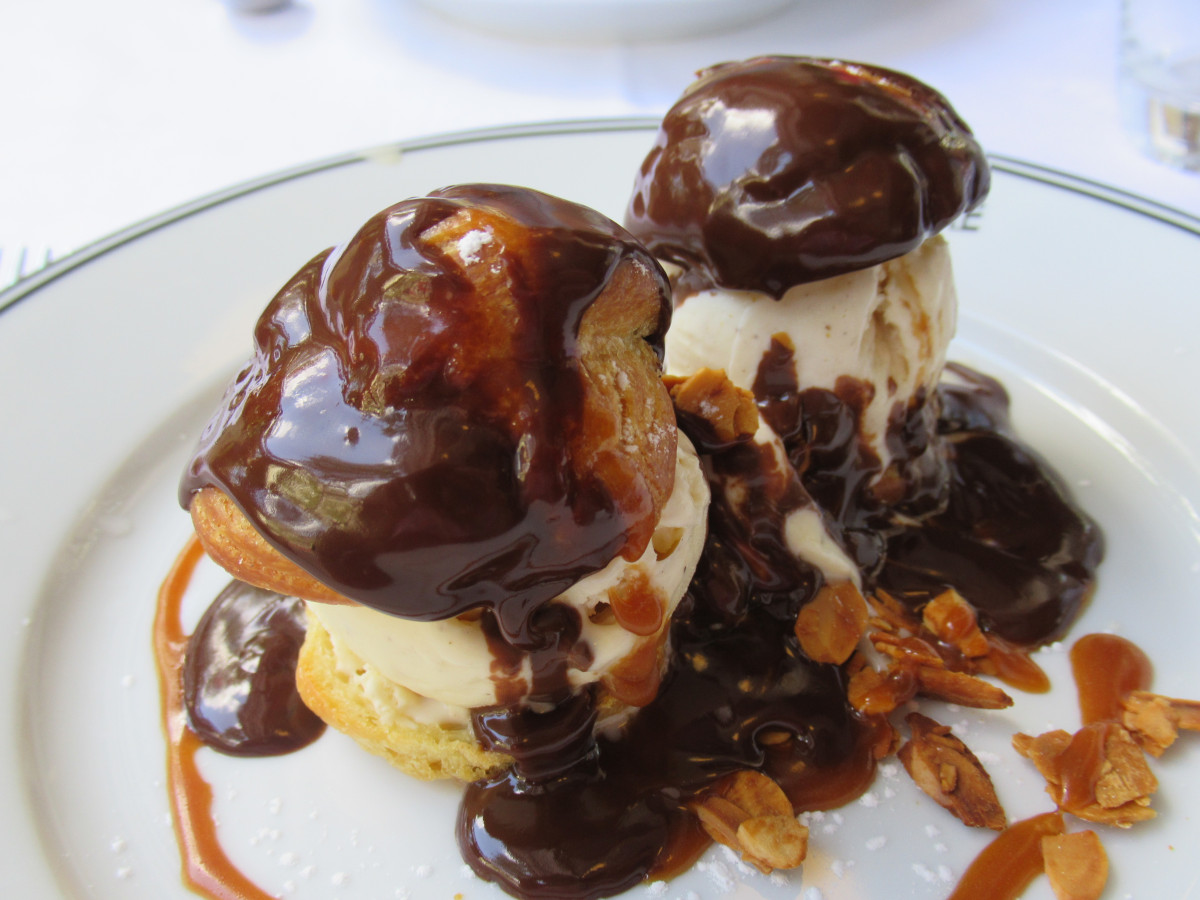
Le Grand Véfour, just near the Palais Royal, opened in the 1780s and was a centre for revolutionary meetings. In the 19th century Victor Hugo was a frequent diner and so was the painter Fragonard, who is said to have died here while eating an ice cream. One guidebook has described it as ‘a history-infused citadel of classic French cuisine’.


Le Train Bleu, known as ‘the most luxurious station buffet in Paris’ was opened at the Gare de Lyon in 1901, just as rail travel was becoming popular. Wealthy Parisians would eat lunch here before setting off to the south for the summer and diners included Coco Chanel and Brigitte Bardot. It is sumptuously decorated – think ceiling paintings, chandeliers, sculptures, and plenty of gold trim. The blogger, The Man in Seat 61’s description of the rum baba he was served sets the tone: ‘Whipping out a long knife, (the waiter) deftly slashed the Mark of Zorro into the sponge and flamboyantly emptied half a bottle of Martinique rum over the top.’
montmartre cafes to look out for
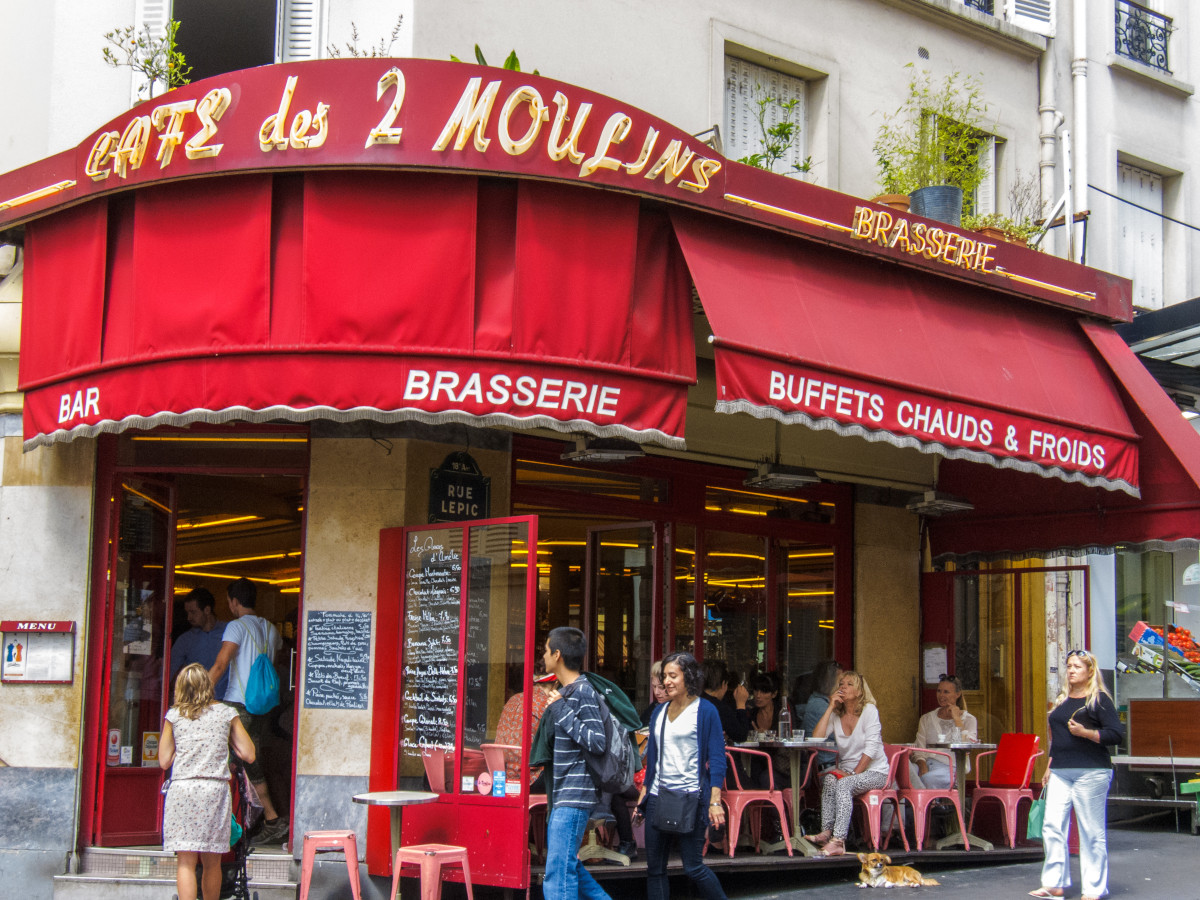
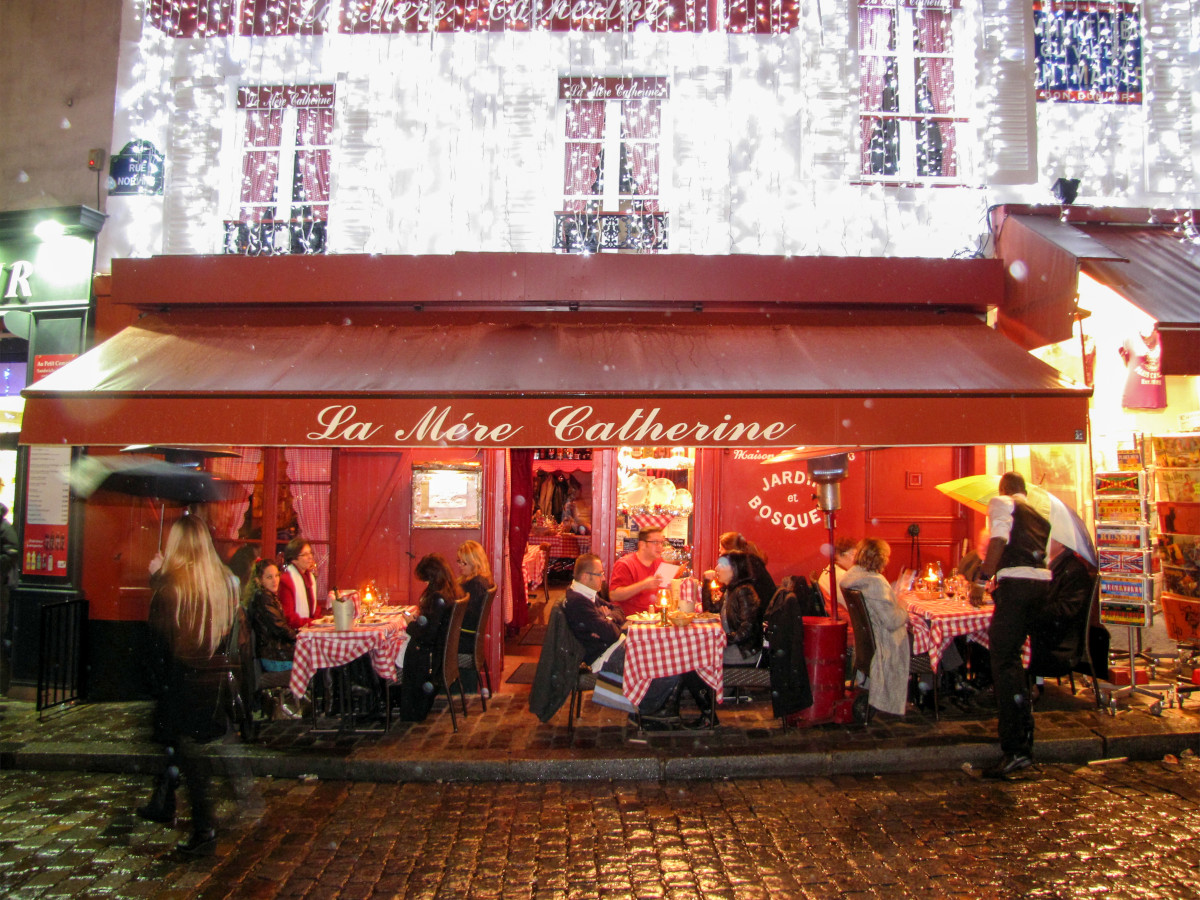
The Café des Deux Moulins is a ‘café du quartier’ (local café) which gained fame for its appearance in the film Amélie. La Mère Catherine on Place du Tertre, with its red and white gingham tablecloths, is another long-standing institution – it opened just after the French revolution. It’s thought to be where the word ‘bistro’ originated because the Russian soldiers who invaded Paris ate here in 1814 and shouted the word – which means ‘quickly’ in Russian – at the staff. Also in Montmartre is Le Lapin Agile, a ‘cabaret artistique’ where you can still enjoy the raucous atmosphere of its heyday at the turn of the last century. Montmartre’s impoverished artists, singers and dancers gathered here to drink to excess.
Listen to the POdcast
Reading suggestions
The Food Lover’s Guide to Paris by Patricia Wells
Down and out in Paris and London by George Orwell
links for this post
Le Procope
Les Deux Magots
Le Café de Flore
Brasserie Lipp
Le Dôme
La Coupole
La Rotonde
Le Select
Les Deux Moulins
Previous episode Café Culture in Paris
Next episode Buried in Paris
Last Updated on November 21, 2024 by Marian Jones





